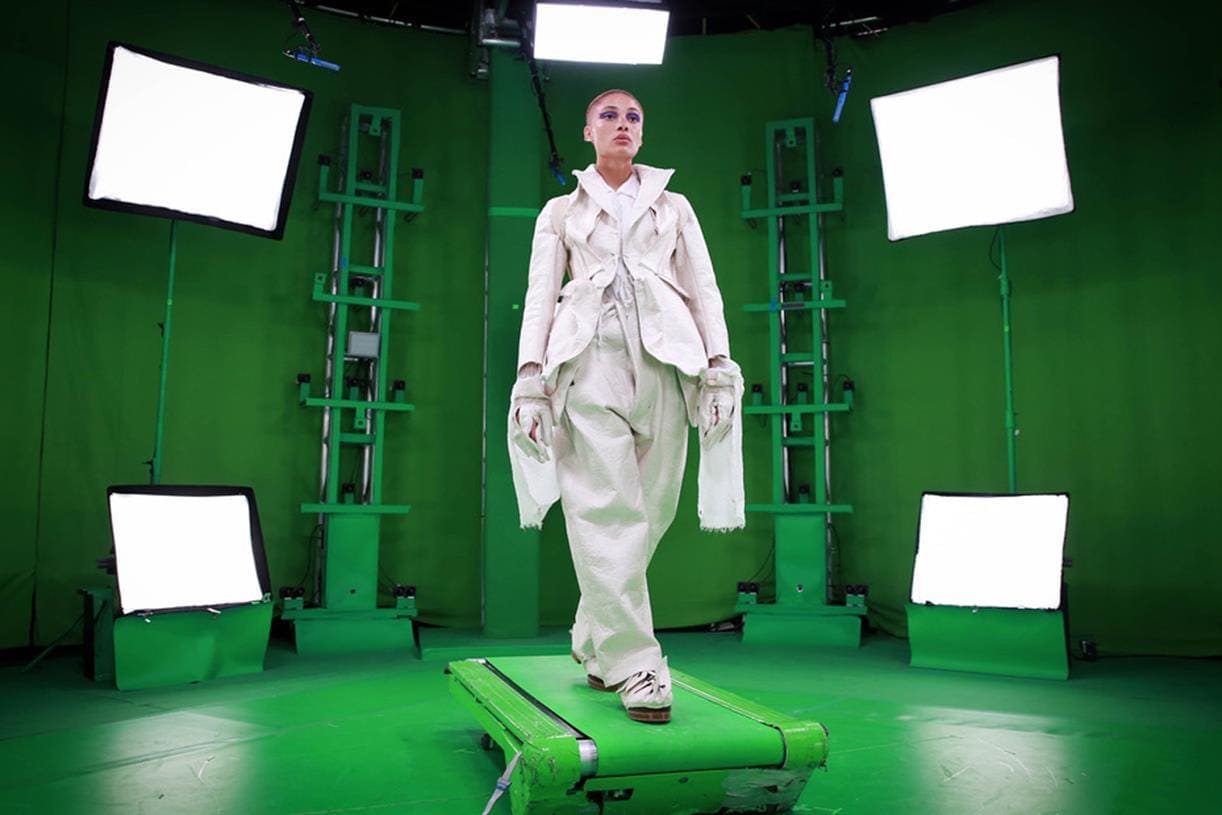Do a Google search of “What is the purpose of a fashion show?”—the search engine’s most popular query related to the term fashion show—and almost 4 billion results come up. That will look like a lot of results to the untrained eye, but an insider will tell you that’s nothing. There is no topic more thrilling, and more likely to wind us up, than the purpose of a fashion show.
London Fashion Week Men’s will be replaced with a digital-only, gender-neutral platform living on LFW’s website, starting with a digital fashion week from 12-14 June. In a landmark collaboration between big tech and fashion — with some tech companies new to fashion entirely — the platform will give members of the public and the trade access to interviews, podcasts, webinars and digital showrooms. Consumers can buy from existing collections and retailers can order for next season.
Around the world

Next month, London Fashion Week Men’s will be replaced with a digital-only, gender-neutral platform living on LFW’s website, starting with a digital fashion week from 12-14 June. In a landmark collaboration between big tech and fashion — with some tech companies new to fashion entirely — the platform will give members of the public and the trade access to interviews, podcasts, webinars and digital showrooms. Consumers can buy from existing collections and retailers can order for next season.
This announcement made a statement: the future of fashion shows will be digitised.
It took a couple weeks for Milan, and then Paris, to follow with digital overhauls of their own. (New York, which cancelled its summer resort shows and postponed its men’s shows, has yet to announce a digital format.) The newly online Paris Fashion Week will show Spring/Summer 2021 Men’s 9-13 July, and Milan Digital Fashion Week will follow on 14-17 July.
Shanghai Fashion Week
Shanghai Fashion Week was initially postponed due to the spread of Covid-19 but organizers decided to partner with Tmall to move the event online. More than 150 designers and brands will use livestreaming to present over 1,000 products from their newest collections and sell garments to more than 800 million monthly active users who visit Alibaba’s e-commerce sites. The event’s “See Now, Buy Now” format will allow viewers to purchase catwalk items – and pre-order new looks from the fall collection – in realtime via their smartphones.

“China’s fashion industry and market have matured through the years and entered into a new age of creative energy and boundless opportunities,” said Vice Secretary-General of Shanghai Fashion Week Xiaolei Lv, also known as Madame Lu. “It would be a great regret if the coronavirus outbreak posed a challenge for these aspiring brands and talents, limiting what they could accomplish. As a platform long dedicated to supporting Chinese creative talents, we must take action.”

With industries around the world coming to a standstill due to the coronavirus, the young but increasingly influential fashion week looks to turn the crisis into opportunity by offering a digital platform for brands to showcase their work and vocalize their creative visions while also engaging with consumers and generating immediate sales in a first-of-its-kind experience. They can make use of the new Tmall Flagship 2.0 format to personalize their virtual stores. For example, brands can leverage augmented-reality applications or “store lofts,” which are special pages of multimedia content users can access by dragging down the screen on their phones.
For this edition of Shanghai Fashion Week, we have integrated some of Alibaba’s most-advanced technologies to bring a new and elevated experience to consumers,” said Mike Hu, head of Tmall Fashion, Luxury and FMCG.
“This partnership allows us to leverage our experience in digitizing brick-and-mortar retail stores and explore a new format for brand and product launches, which brings together technologies like livestreaming, short-form videos, DingTalk and Tmall Flagship 2.0 in a full-chain solution,” he added.
Hu said this “cloud launch” format shakes up the traditional product-launch event. Instead of a two-hour press conference, brands can interact with consumers across an extended timeline, from warm-up previews to the live broadcast and post-event interviews, in front of an audience of potentially thousands or millions instead of just a few hundred people. It breaks down the physical limitations of time and geography for brands to engage their consumers, he said.

Fashion Forward
Tmall also wants to bring this capability and new digital technologies to future seasons of fashion weeks around the globe. Last year, the platform rolled out a series of activations showcasing Chinese designers at the fashion week events in New York, Paris and Milan through its China Cool initiative. Tmall also partners with such weeks to help international brands, such as Grey Jason Wu and Robert Geller, break into China’s burgeoning fashion market.
Another major focus for Tmall at this year’s fashion weeks will be crossovers, especially those that merge beauty with fashion, said Hu. The platform plans to team up with global brands to launch 360-degree marketing campaigns that cater to Chinese audiences, much like Super Brand Day, which rallies all the resources across the Alibaba ecosystem to create a smaller version of the company’s annual 11.11 mega-sale for a single brand.
Hu, who recently took the helm at Tmall’s fashion and luxury divisions, said he also wants to use more innovations, such as cloud launches or livestreaming, to help brands on the platform supercharge their sales, branding, marketing, consumer insights and membership operations. And as more luxury brands, such as Cartier and Chanel, join Tmall’s Luxury Pavilion channel, the platform is designing new tools to help them better reach luxury consumers in China. In the near future, it will launch a new service offering luxury products at different stages of the product life cycle – for example, full-price products and out-of-season outlet items – targeted at different consumers.
“This would allow brands to bring their full range of products across life cycles onto one platform,” said Hu, adding that the offering would help brands gain a better understanding of different types of consumers. “This year, we expect to see more luxury brands strategize around their Tmall flagships as a hub for brand-building and consumer engagement.”
B2B becomes B2C
When London Fashion Week starts on 12 June, fashion fans will have access to largely the same experience that editors do, aside from a press and retail portal and digital showroom appointments. “People will look at that divergence between what you can do for a show as opposed to what you can do for a buying experience,”
Their purpose and structure will be less specific to season, gender and the type of content.
While these fashion capitals are the most influential, the past month has already given a glimpse of what an all-digital fashion show or fashion week might look like. China’s Shanghai Fashion Week pivoted to a livestream on sponsor Alibaba’s Tmall e-commerce platform at the end of March, followed by G-Star Raw’s 3 April “Stay-at-Home Catwalk” and San Francisco apparel brand Betabrand’s quirky “Work from Home Fashion Show” on 15 April, among others.
These new formats for showing and buying collections — if they even remain collections — force the issue on an industry already succumbing to the tides of change. What does a digital fashion week mean? And, crucially, what is the point of fashion week?
“The whole point is changing,” says the London College of Fashion’s Matthew Drinkwater, who heads its Fashion Innovation Agency. “There is always going to be that buying element — that’s not going to disappear — but it is going to become drastically reduced.”
Digital fashion shows and fashion weeks will speak to both consumer and industry audiences, with some buy-now elements.
Live events will encourage audience participation, allow more interactivity for viewers and more data for brands.
The article is authored by – Bhavika Gulrajani
Get social with us :
https://www.facebook.com/fashionvaluechain/
https://in.pinterest.com/fashionvaluechain/
https://www.linkedin.com/company/textilevaluechain/
fashionvaluechain@fvcmedia
instagram.com/fashionvaluechain

